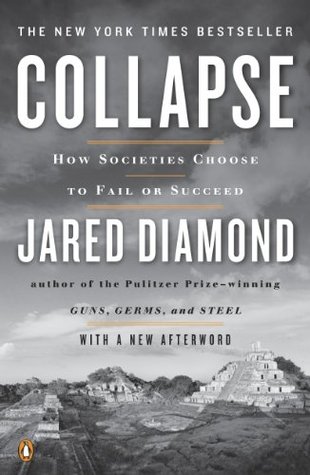More on this book
Community
Kindle Notes & Highlights
Read between
September 21, 2017 - March 5, 2018
The first four of the 12 consist of destruction or losses of natural resources; the next three involve ceilings on natural resources; the three after that consist of harmful things that we produce or move around; and the last two are population issues.
more than half of the world’s original area of forest has already been converted to other uses, and at present conversion rates one-quarter of the forests that remain will become converted within the next half-century.
Deforestation was a or the major factor in all the collapses of past societies
soil problems contributed to the collapses of all past societies
Even if the people of China alone achieved a First World living standard while everyone else’s living standard remained constant, that would double our human impact on the world
no one in First World governments is willing to acknowledge the dream’s impossibility: the unsustainability of a world in which the Third World’s large population were to reach and maintain current First World living standards.
we don’t measure our economic well-being just by the present size of our bank accounts: we also look at our direction of cash flow.
The Khmer were constantly fighting against each other and against their western neighbors the Thai, their eastern neighbors the Cham of South Vietnam,
By the early 1200s the Khmer Empire under King Jayavarman the Seventh was Southeast Asia’s largest and most powerful state, with its capital at Angkor.
All five of those factors interacted: climate change and erosion weakened the Khmer to the point where they could no longer resist their enemies, no longer maintain and improve their water management system, and turned away from an agricultural economy to maritime trade until shifting trade routes and political power made that, too, less profitable.


